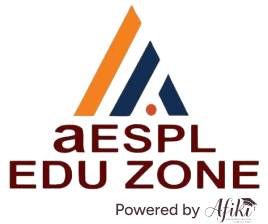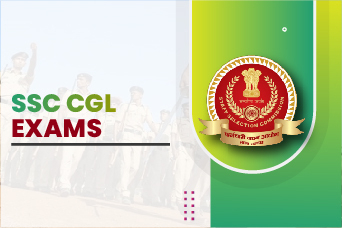SSC CGL
Staff Selection Commission (SSC)/SSC - CGL-
4Sessions
-
974Content
-
110Mock Test
Key Highlights
- Video Lectures
- PDF Notes
- Practice Questions
- Mock Tests
Overview
SSC CGL
To begin with the preparation for any exam, the candidates must be aware of the complete & accurate exam pattern along with a detailed SSC CGL syllabus to plan a full-proof strategy to score good marks in the particular exam. The exam pattern & syllabus for each SSC CGL Phase has been discussed in this article. Staff Selection Commission selects candidates for Combined Graduate Level posts through a Four-Tier recruitment process. The selection process begins with Tier-I & Tier-II which are MCQ Online Tests.
SSC CGL Tier-I Syllabus
SSC CGL Tier-I Syllabus- Quantitative Aptitude
In SSC CGL Tier-1 Exam, the Quantitative Aptitude Questions focus on analyzing the candidate's ability to appropriately use numbers and number sense. This section is common in Tier-1 & Tier-2 and some of the topics are repetitive, so do prepare well to save time during your next stage of preparation for the same chapters. The topics for SSC CGL Quantitative Aptitude as set by the commission are as follows-
Computation of whole numbers
Decimals
Fractions
Relationships between numbers
Profit and Loss
Discount
Partnership Business
Mixture and Alligation
Time and distance
Time & Work
Percentage
Ratio & Proportion
Square roots
Averages
Interest
Basic algebraic identities of School Algebra & Elementary surds
Graphs of Linear Equations
Triangle and its various kinds of centres
Congruence and similarity of triangles
Circle and its chords, tangents, angles subtended by chords of a circle, common tangents to two or more circles
Triangle
Quadrilaterals
Regular Polygons
Right Prism
Right Circular Cone
Right Circular Cylinder
Sphere
Heights and Distances
Histogram
Frequency polygon
Bar diagram & Pie chart
Hemispheres
Rectangular Parallelepiped
Regular Right Pyramid with triangular or square base
Trigonometric ratio
Degree and Radian Measures
Standard Identities
Complementary angles
SSC CGL Tier-I Syllabus- General Intelligence and Reasoning
The SSC CGL Syllabus for General Intelligence and Reasoning consists of both verbal and non-verbal types of topics. This section will be key to examining the candidate's activeness and sharpness in any situation. The topics to be covered under SSC CGL Syllabus for General Intelligence and Reasoning are enlisted below-
Analogies
Similarities and differences
Space visualization
Spatial orientation
Problem-solving
Analysis
Judgment
Blood Relations
Decision making
Visual memory
Discrimination
Observation
Relationship concepts
Arithmetical reasoning
Figural classification
Arithmetic number series
Non-verbal series
Coding and decoding
Statement conclusion
Syllogistic reasoning
SSC CGL Tier-I Syllabus- English Language
Of all the sections in SSC CGL Tier-1, the English section will be only in the English language. The candidates have to solve the questions asked in the exam which would analyze their understandability of the subject and their basic comprehension and writing ability would also be tested. Good command over the following topics would help the candidates to excel good score in this section.
Phrases and Idioms
One-word Substitution
Sentence Correction
Error Spotting
Fill in the Blanks
Spellings Correction
Reading Comprehension
Synonyms-Antonyms
Active Passive
Sentence Rearrangement
Sentence Improvement
Cloze test
SSC CGL Tier-I General Awareness Syllabus
This section would be helpful for testing the candidate's awareness of General Knowledge and General Science and their application to society. Though the syllabus of this section is vast in terms of the following topics.
India and its neighboring countries especially pertaining to History, Culture, Geography, Economic Scene, General Policy & Scientific Research
Science
Current Affairs
Books and Authors
Sports
Important Schemes
Important Days
Portfolio
People in News
SSC CGL Tier II Syllabus
After the preliminary exam has been conducted, it will be necessary to gear up for the Tier-2 Exam of the SSC CGL 2022 Exam. The Mains Exam will be conducted online and is an objective multiple-choice exam. This year, the Tier-II & Tier-III exam will be conducted on the same day. The major sections asked in SSC CGL Tier-2 Exam are Quantitative Aptitude, English Language and Comprehension, Statistics, and General Studies (Finance and Economics).
SSC CGL Tier II Syllabus- Quantitative Ability
The main focus of this section is to check the candidate's knowledge in terms f the appropriate use of numbers and the number sense the candidate. Though the section is also asked in the Tier-1 Exam, however, the level and type of questions will be designed differently and slightly more moderate than in the 1st stage. So candidates must buckle up their reparation with the topics listed below-
Computation of whole numbers
Decimals
Fractions
Relationships between numbers
Percentage
Ratio & Proportion
Square roots
Averages
Interest
Profit and Loss
Discount
Partnership Business
Mixture and Alligation
Mensuration
Time and distance
Time & Work
Basic algebraic identities of School Algebra & Elementary surds
Graphs of Linear Equations
Triangle and its various kinds of centres
Congruence and similarity of triangles
Circle and its chords, tangents, angles subtended by chords of a circle, common tangents to two or more circles
Triangle
Quadrilaterals
Regular Polygons
Right Prism
Right Circular Cone
Right Circular Cylinder
Sphere
Hemispheres
Rectangular Parallelepiped
Regular Right Pyramid with triangular or square base
Trigonometric ratio
Degree and Radian Measures
Standard Identities
Complementary angles
Heights and Distances
Histogram
Frequency polygon
Bar diagram
Pie chart
SSC CGL Tier II Syllabus- English Language and Comprehension
Fluency in the English Language will be tested on the basis of this section of the SSC CGL Tier-2 Syllabus. The basic knowledge about the English language in terms of the following topics is necessary to get good marks in this section of the Tier-2 Exam. The syllabus for reading comprehension is not specific and is added in the syllabus to check candidates' quick responses to the situations.
Spot the error
Fill in the blanks
Synonyms
Antonyms
Spelling/ detecting misspelt words
Idioms & phrases
One word substitution
Improvement of sentences
Active/ passive voice of verbs
Conversion into Direct/Indirect narration
Shuffling of sentence parts
Shuffling of sentences in a passage
Cloze passage
Comprehension passage
SSC CGL Tier II Syllabus- Statistics
For some candidate, this section might be tough & difficult to understand. The basic tip is to get the concept clear and repetitive revision of the concepts would be beneficial to grab good marks in this section too. The SSC CGL Tier-2 Syllabus for Statistics is described as follows-
Collection, Classification, and Presentation of Statistical Data –Primary and Secondary data, Methods of data collection; Tabulation of data; Graphs and charts; Frequency distributions; Diagrammatic presentation of frequency distributions.
Measures of Central Tendency - Common measures of central tendency – mean median and mode; Partition values- quartiles, deciles, percentiles.
Measures of Dispersion- Common measures of dispersion – range, quartile deviations, mean deviation, and standard deviation; Measures of relative dispersion.
Moments, Skewness, and Kurtosis – Different types of moments and their relationship; the meaning of skewness and kurtosis; different measures of skewness and kurtosis.
Correlation and Regression – Scatter diagram; simple correlation coefficient; simple regression lines; Spearman‟s rank correlation; Measures of association of attributes; Multiple regression; Multiple and partial correlations (For three variables only).
Probability Theory – Meaning of probability; Different definitions of probability; Conditional probability; Compound probability; Independent events; Bayes‟ theorem.
Random Variable and Probability Distributions – Random variable; Probability functions; Expectation and Variance of a random variable; Higher moments of a random variable; Binomial, Poisson, Normal and Exponential distributions; Joint distribution of two random variables (discrete).
Sampling Theory – Concept of population and sample; Parameter and statistic, Sampling and non-sampling errors; Probability and nonprobability sampling techniques(simple random sampling, stratified sampling, multistage sampling, multiphase sampling, cluster sampling, systematic sampling, purposive sampling, convenience sampling, and quota sampling); Sampling distribution(statement only); Sample size decisions.
Statistical Inference - Point estimation and interval estimation, Properties of a good estimator, Methods of estimation (Moments method, Maximum likelihood method, Least squares method), Testing of hypothesis, Basic concept of testing, Small sample, and large sample tests, Tests based on Z, t, Chi-square and F statistic, Confidence intervals.
Analysis of Variance - Analysis of one-way classified data and two-way classified data.
Time Series Analysis - Components of time series, Determinations of trend component by different methods, Measurement of seasonal variation by different methods.
Index Numbers - Meaning of Index Numbers, Problems in the construction of index numbers, Types of an index number, Different formulae, Base shifting and splicing of index numbers, Cost of living Index Numbers, Uses of Index Numbers.
SSC CGL Tier II Syllabus- General Studies-Finance and Economics
This section of the SSC CGL Tier 2 Syllabus is divided into 2 parts Finance & Accounts and Economics & Governance for which the sub-topics are detailed below-
Part A: Finance and Accounts-(80 marks):
1.1 Financial Accounting
Nature and scope
Limitations of Financial Accounting
Basic concepts and Conventions
Generally Accepted Accounting Principles
1.2 Basic concepts of accounting
Single and double entry
Books of Original Entry
Bank Reconciliation
Journal, ledgers
Trial Balance
Rectification of Errors
Manufacturing
Trading
Profit & Loss Appropriation Accounts
Balance Sheet
Distinction between Capital and Revenue Expenditure
Depreciation Accounting
Valuation of Inventories
Non-profit organisations Accounts
Receipts and Payments and Income & Expenditure Accounts
Bills of Exchange
Self Balancing Ledgers
Part B: Economics and Governance-(120 marks):
2.1 Comptroller & Auditor General of India- Constitutional provisions, Role and responsibility.
2.2 Finance Commission-Role and functions.
2.3 Basic Concept of Economics and introduction to Micro Economics
Definition
Scope and nature of Economics
Methods of economic study
Central problems of an economy
Production possibilities curve
2.4 Theory of Demand and Supply
Meaning and determinants of demand
Law of demand and Elasticity of demand
Price
Income and cross elasticity
Theory of consumer‟s behaviour
Marshallian approach and Indifference curve approach
Meaning and determinants of supply
Law of supply
The elasticity of Supply
2.5 Theory of Production and cost
Meaning and Factors of production
Laws of production- Law of variable proportions and Laws of returns to scale.
2.6 Forms of Market and price determination in different markets
Various forms of markets-Perfect Competition
Monopoly
Monopolistic Competition
Oligopoly
Price determination in these markets.
2.7 Indian Economy:
2.7.1 Nature of the Indian Economy Role of different sectors, Role of Agriculture, Industry, and Services-their problems and growth.
2.7.2 National Income of India-Concepts of national income, Different methods of measuring national income.
2.7.3 Population-Its size, rate of growth, and its implication on economic growth.
2.7.4 Poverty and unemployment- Absolute and relative poverty, types, causes, and incidence of unemployment.
2.7.5 Infrastructure-Energy, Transportation, Communication.
2.8 Economic Reforms in India
Economic reforms since 1991
Liberalization
Privatization
Globalization
Disinvestment
2.9 Money and Banking:
2.9.1 Monetary/ Fiscal policy- Role and functions of Reserve Bank of India; functions of commercial Banks/RRB/Payment Banks.
2.9.2 Budget and Fiscal deficits and Balance of payments.
2.9.3 Fiscal Responsibility and Budget Management Act, 2003.
2.10 Role of Information Technology in Governance.
Course content
SSC CGL Premium
-
4Sessions
-
496Videos
-
478Pdfs
The efficacy of a student's preparation is contingent upon both their current grade level and the specific examination they are gearing up for. To optimize their study regimen, our platform offers a comprehensive solution. Our content is meticulously curated to be highly interactive and of exceptional quality.
Video Lectures: Our online video lectures are meticulously recorded in 4k resolution. These lectures serve to enhance student engagement, thereby fostering academic achievement. When students are genuinely interested in the material, they are more likely to digest and retain it effectively.
PDF Notes: We prioritize the creation of concise notes that emphasize key points, ensuring ease of access, organization, and reference. This approach is designed to facilitate information retention, as it necessitates focused concentration and active listening, which in turn stimulate cognitive processes conducive to enhanced learning outcomes.
Practice Questions: Questions have long been regarded as a fundamental pedagogical tool employed by educators and mentors to evaluate students' comprehension, stimulate critical thinking, and foster a deeper understanding of the subject matter. Well-crafted questions serve to engender fresh insights, stimulate meaningful discussions, and encourage thorough exploration of the topic at hand.






